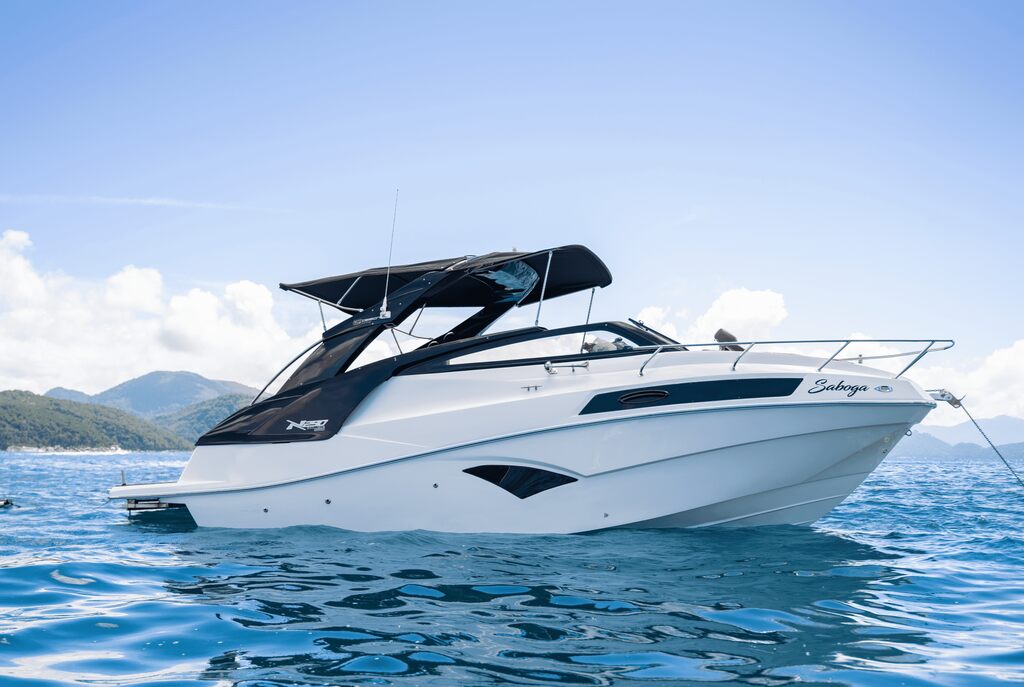LATEST NEWS
Speedboat insurance: essential protection for your vessel

Speedboat insurance is probably the last thing on your mind until something goes wrong. What happens when an unexpected repair eats into your weekend plans or your boat is damaged while docked?
If you own a high-performance boat, you already know that risks come with the territory. Speed and power demand attention.
In recent years, demand for marine insurance has grown worldwide. This reflects not only the rise in activity at sea, but the increasing need for broader and more specialized coverage, even for recreational vessels.
In this article, we explain how speedboat insurance works, what it covers and what can affect its price. We also bring practical tips to help reduce your premium and keep your vessel protected without overspending.
What is speedboat insurance?
Speedboat insurance is a type of boat insurance designed specifically for high-performance recreational vessels. It works similarly to car insurance, but tailored to the features and risks of owning a speedboat.
This type of coverage usually includes protection against physical damage to the boat itself, as well as liability coverage for third-party damage or injury that may occur during use.
Some policies may also offer towing assistance, coverage for onboard equipment and protection against theft or vandalism.
Unlike general boat insurance, speedboat insurance often considers factors like engine power, maximum speed, and intended use (recreational vs. competitive) when determining coverage conditions.
How does this type of insurance work?
Speedboat insurance protects the boat owner against unexpected financial losses related to the vessel.
If a covered event happens, such as a collision with a submerged object or damage during transport, the insurance company reimburses repair costs or replaces the boat according to the policy terms.
To make this clearer, let’s picture a situation many of us can relate to.
Imagine you are cruising along the coast with friends on a sunny afternoon, and the boat hits driftwood just below the surface. Even at low speed, the impact can cause significant damage to the propeller or lower unit.
With the right insurance, the repair expenses would not come entirely out of your pocket.
After purchasing a policy, the owner pays an annual or monthly premium. In case of an incident, a claim is filed with the insurer.
Depending on the coverage type, which can be based on actual cash value or agreed value, the reimbursement amount is calculated accordingly.
Want to see what a perfect ride looks like? Watch the NX50 Invictus slicing through the waters of Rio de Janeiro in this short video.
What are the main coverages?
In most boat insurance policies, you will find coverage for things like:
- Hull and equipment: covers damage or loss to the boat’s structure and permanently installed parts.
- Theft: protects against boat theft, whether it’s stored at a marina, docked at home or in transit.
- Accidental damage: applies to collisions with floating objects, submerged hazards or damage during loading and unloading.
- Third-party liability: covers injuries or damages caused to others during operation.
- Emergency towing and assistance: provides help in case of breakdowns or immobilization on the water.
- Personal belongings and onboard electronics: insures valuable items and devices carried onboard.
Factors that influence the value of insurance
One of the first things that affect the cost of a speedboat insurance policy is the boat’s specifications, such as size, model, engine type and power. High-performance engines or customizations usually lead to higher premiums.
How the boat is used also matters. Regular navigation in open waters, long-distance trips or participation in races increases the perceived risk. Where and how the boat is stored, whether it is docked or trailered, also plays a part in the pricing.
Beyond individual factors, global trends are reshaping the insurance landscape.
The marine insurance industry was valued at 35 billion dollars in 2024. According to IMARC Group, it is expected to reach 45.7 billion by 2033, driven by evolving coverage demands, rising trade and growing demand for wider coverage in uncertain geopolitical scenarios.
Even though this data reflects the broader maritime sector, it helps explain the overall rise in premiums. More risk brings more claims. Which leads to higher prices for boat owners as well.
Finally, the policy structure also affects the final price. Choosing lower deductibles, broader coverage or extra protection will naturally raise the premium. On the other hand, these options can help reduce expenses in case of an incident.
Learn more: Yacht sizes guide: from small boats to megayachts
Difference between traditional boat and speedboat insurance
Although the purpose is the same (protecting the vessel) the structure and focus of the insurance change depending on the type of boat we’re dealing with.
At first glance, traditional boat insurance and speedboat insurance may seem similar. Both offer protection against damage, theft and liability. But when we look closer, the differences become clear.
Speedboats are built for performance. They go faster, respond quicker and are often used in more dynamic conditions.
Because of that, they face risks that slower, recreational boats usually don’t. That’s why policies for speedboats are designed to address those specific risks.
While a standard boat policy may focus on general damage and third-party coverage, speedboat insurance tends to consider engine power, top speed, and even how the boat is stored and transported.
Some insurers also apply stricter underwriting criteria or require safety equipment upgrades to mitigate the higher risk.
Documentation required for hiring
Getting speedboat insurance is usually a straightforward process, but it does require some paperwork. Most insurers follow a standard set of requirements, such as:
- Personal details of the owner, including ID, proof of residence, and contact information.
- Boat information, such as registration, year, make, model, hull identification number, engine specifications, and current market value.
- Usage details, including the intended use (recreational or competitive), usual navigation area, and storage method.
- Owner’s boating history, which includes previous insurance claims, navigation experience, and boating licenses if applicable.
Tips for reducing insurance costs

While some insurance costs are out of our hands, there are a few things we can do to help keep premiums under control.
- Take care of the boat’s security. Store the boat in a safe location, use quality locks and avoid leaving valuables onboard.
- Install anti-theft systems. GPS trackers, alarms and immobilizers are all upgrades that insurers tend to value.
- Invest in safe boating courses. Having certified training can reduce the perceived risk and often leads to lower premiums.
- Maintain a clean claims history. Avoiding unnecessary claims helps show that the boat is well maintained and responsibly used.
Each of these actions shows insurers that we’re taking proactive steps to protect our investment.
Looking for more useful insights like these? Keep browsing our blog to stay on top of what matters in the nautical world.
Conclusion
Speedboat insurance is not just a formality. It is a smart way to protect what, for many, is more than a boat. It is a lifestyle choice, a family investment and a symbol of personal freedom on the water.
Throughout this article, we looked at how the value of insurance is shaped by the boat’s technical features, the way it is used and larger global trends in the insurance industry.
We also explored what a typical policy includes and how to manage costs with practical strategies.
Understanding these points is important when investing in a high-performance vessel. The right insurance does more than reduce risks. It gives you peace of mind, control and the freedom to enjoy each trip without surprises.
If you are looking for a speedboat that reflects this way of thinking, discover the luxury line from NX Boats. Each model is designed for those who want more from every experience on the water.

Um novo mundo está surgindo, e a NX Boats faz parte dessa mudança, estamos revolucionando o design, unindo conforto e modernidade tudo isso por que queremos proporcionar a melhor experiência para quem navega com uma NX.

